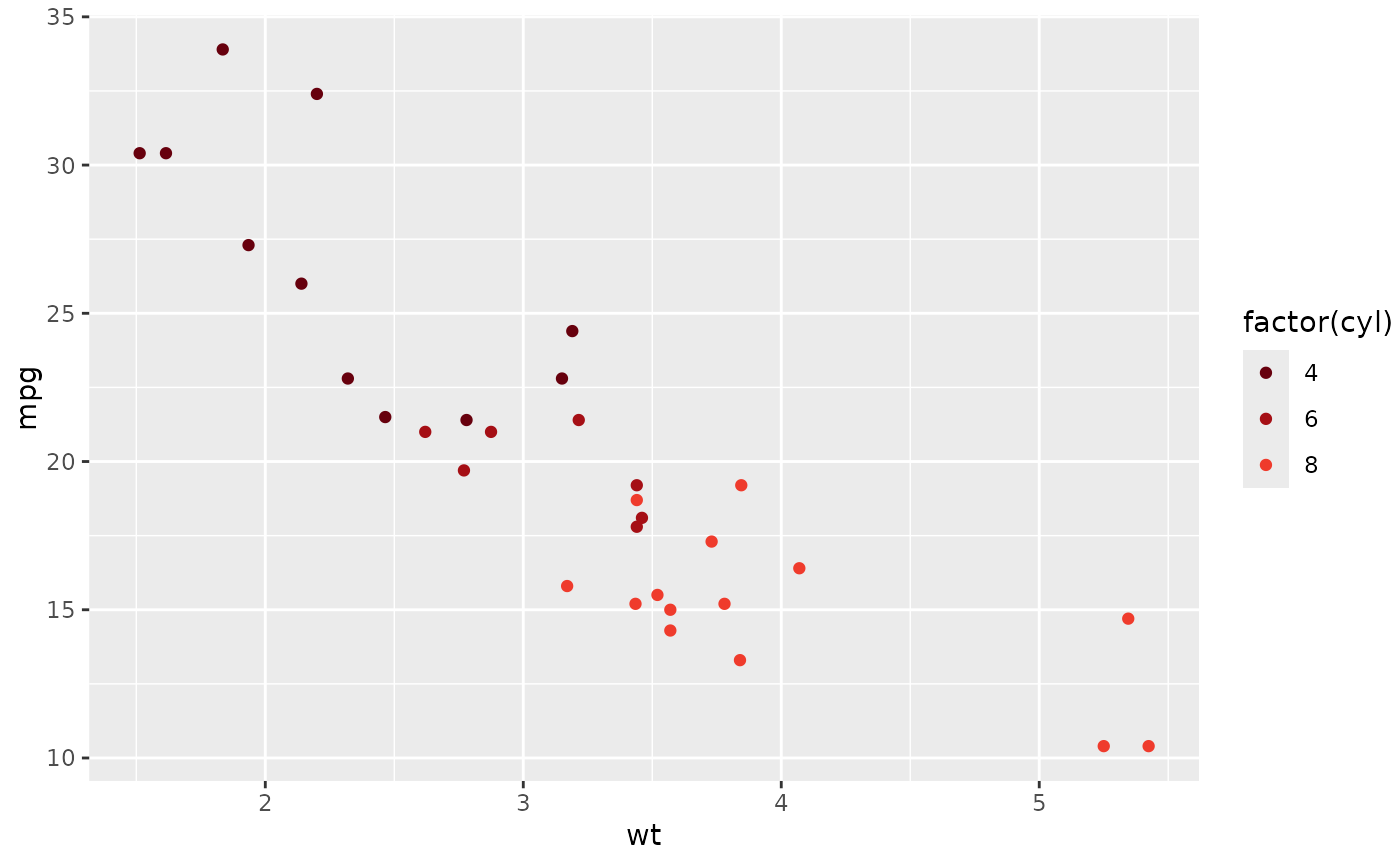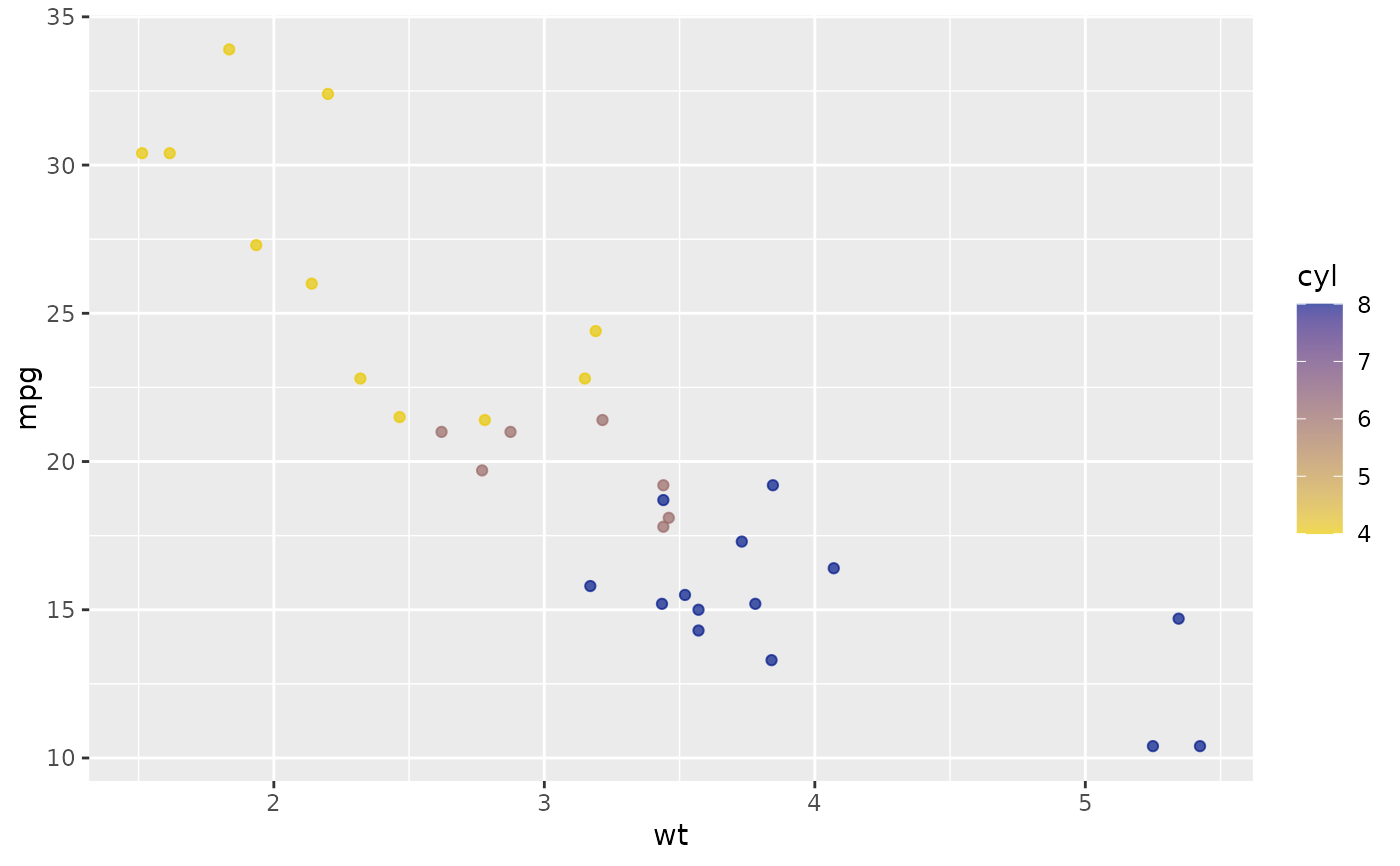This function sets the gnomeR color palette as the default palette for all
ggplot2 objects. It does so by overriding the following four functions from
the ggplot2 package: scale_color_discrete(),
scale_fill_discrete(), scale_color_continuous(), and
scale_fill_continuous(), and places them in the specified environment.
A typical workflow would include this function at the top of a script,
and subsequent calls to ggplot() will utilize the gnomeR color palette.
Usage
set_gnomer_palette(
palette = c("pancan", "main", "sunset"),
gradient = c("pancan", "main", "sunset"),
reverse = FALSE,
env = rlang::caller_env()
)Arguments
- palette
name of palette in gnomer_palettes, supplied in quotes. Options include
"pancan", "main", "sunset". Default is"pancan".- gradient
name of gradient palette in
gnomer_palettes, supplied in quotes. Options include"pancan", "main", "sunset". Default is"pancan".- reverse
if set to
TRUE, will reverse the order of the color palette- env
environment in which palette will take effect. Default is
rlang::caller_env().
Examples
library(ggplot2)
set_gnomer_palette()
ggplot(mtcars, aes(wt, mpg, color = factor(cyl))) +
geom_point()
 # setting other gnomeR palettes
set_gnomer_palette(palette = "main", gradient = "sunset")
ggplot(mtcars, aes(wt, mpg, color = factor(cyl))) +
geom_point()
# setting other gnomeR palettes
set_gnomer_palette(palette = "main", gradient = "sunset")
ggplot(mtcars, aes(wt, mpg, color = factor(cyl))) +
geom_point()
 ggplot(mtcars, aes(wt, mpg, color = cyl)) +
geom_point()
#> Warning: The `scale_name` argument of `continuous_scale()` is deprecated as of ggplot2
#> 3.5.0.
ggplot(mtcars, aes(wt, mpg, color = cyl)) +
geom_point()
#> Warning: The `scale_name` argument of `continuous_scale()` is deprecated as of ggplot2
#> 3.5.0.
